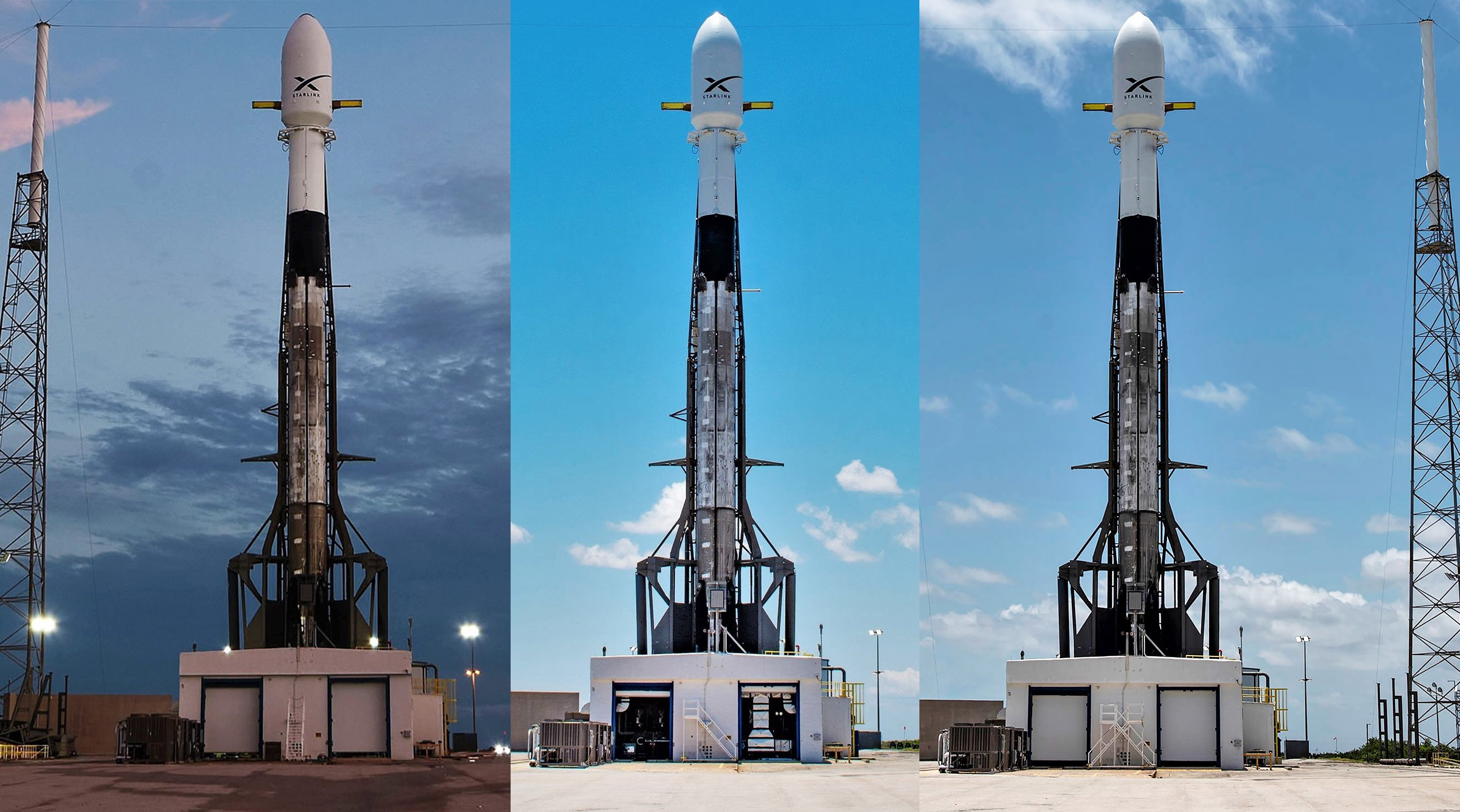

News
SpaceX’s next Falcon 9 missions likely two back-to-back Starlink satellite launches
Hinted at by a launch photographer and confirmed by an article published on NASASpaceflight.com, it appears that SpaceX’s next Falcon 9 launch is at least a month away and will likely be the company’s first operational Starlink mission, deemed “Starlink 1”.
Barring a surprise mission in the interim, this means that SpaceX is going to have a gap of at least two months between customer launches, something the company has not experienced since mid-2015 – more than four years ago. As such, it’s an extremely happy coincidence that SpaceX may now have internal Starlink launches to fill lulls in its commercial launch manifest.
Like any production and services-focused company, SpaceX incurs operational costs whether or not its services are being used – employees, leases, supplier contracts, and more still need to be paid for, facilities still need upkeep, long-lead production can’t simply pause, and many other recurring costs can’t be avoided. In theory, supplementing commercial launches with internal launches thus limits SpaceX’s downtime and effectively increases overall capital efficiency.
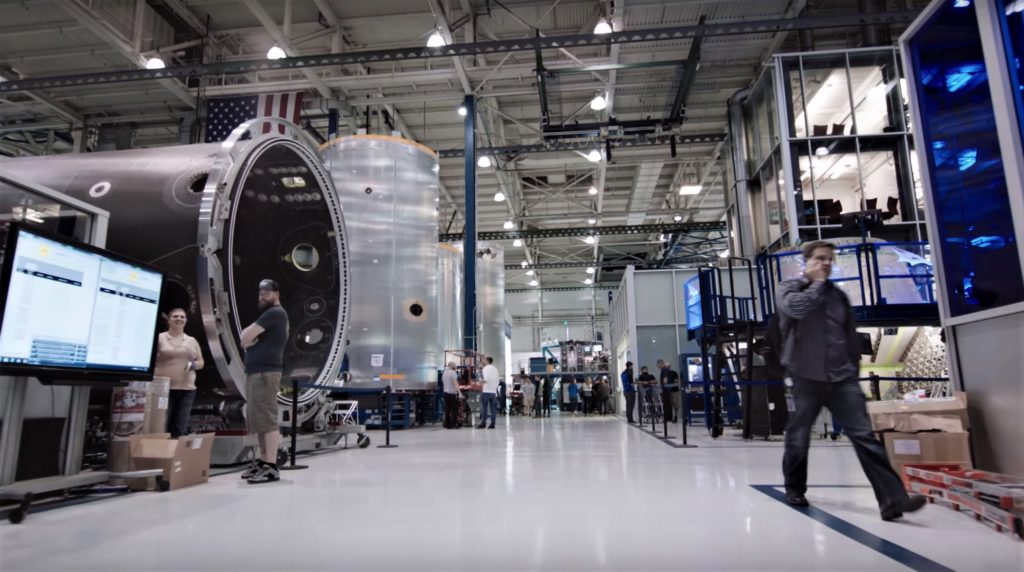
Flatsat revolution
Enter Starlink, a colossal ~11,800-satellite broadband internet constellation nominally designed, manufactured, launched, and operated by SpaceX. On May 23rd, after approximately one week of delays, a twice-flown Falcon 9 booster lifted off for the third time in support of SpaceX’s first dedicated Starlink launch, an unparalleled 60-satellite beta test known internally as “Starlink v0.9”.
Upsetting all expectations, SpaceX managed to fit en incredible 60 high-performance Starlink satellites into Falcon 9’s unchanged payload fairing – middle of the ground in terms of usable volume. Weighing anywhere from 16,000 kg to 18,500 kg (35,300-40,800 lb), SpaceX’s very first dedicated Starlink launch also crushed the company’s record for heaviest payload launched by several metric tons.
In a fascinating turn of events, SpaceX ultimately sided with a largely unprecedented form factor for its operational Starlink satellites, resulting in ultra-thin, rectangular spacecraft that can be stacked like cards and feature their own integrated locking and stacking mechanisms.
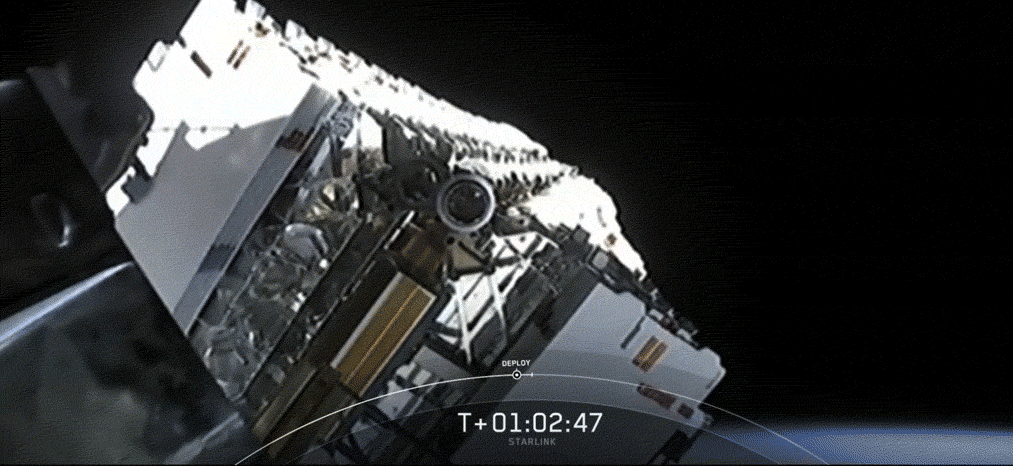
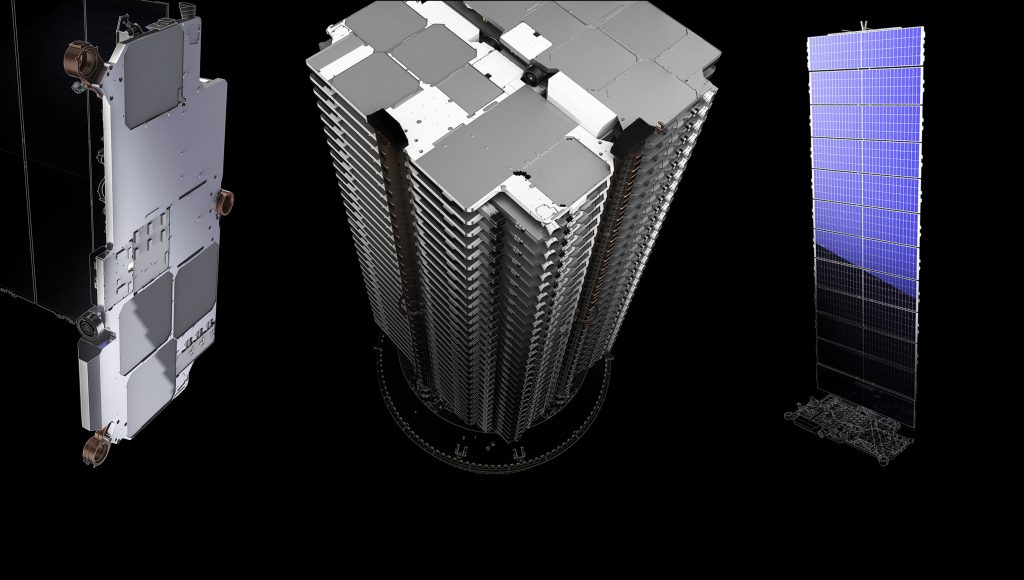
A paradigm shift
According to NASASpaceflight.com, SpaceX’s first and second operational Starlink missions (Starlink 1 and 2) are scheduled to launch no earlier than (NET) October 17th and November 4th, while a similarly trustworthy source puts Starlink 1’s launch date NET “late October”.
Given that Starlink v0.9 was effectively a massive flight test meant to tease out issues with the satellites’ designs, any new any satellites launched in the coming months will have almost certainly been manufactured, assembled, and prepared for flight in just a few months. Unfortunately, out of the 60 satellites launched in May 2019, 10 (16.5%) have been decommissioned for unknown reasons, although the remaining 50 (83.5%) have reached their final orbits and are believed to be in good health.
Put simply, a >15% failure rate is not acceptable for an operational constellation of thousands of satellites, meaning that SpaceX will likely continue to refine and improve its Starlink design before truly ramping up production and launch cadence. Unless the issues leading to multiple satellite failures were relatively simple or expected, the company’s next one (or two) Starlink launches could be closer to “v0.95” than the first fully operational missions. Time will tell.
For now, the fact alone that SpaceX reportedly plans to complete its 180th high-performance satellites barely nine months after beginning high-volume production is dumbfounding. Incredibly, building 180 satellites in 9 months is, by all means, a low-volume run relative to what SpaceX will need to achieve to launch its full Starlink constellation by late 2027. A production rate of 180 Starlink satellites per month is much closer to the necessary production and launch cadences needed for SpaceX’s deployment milestones.
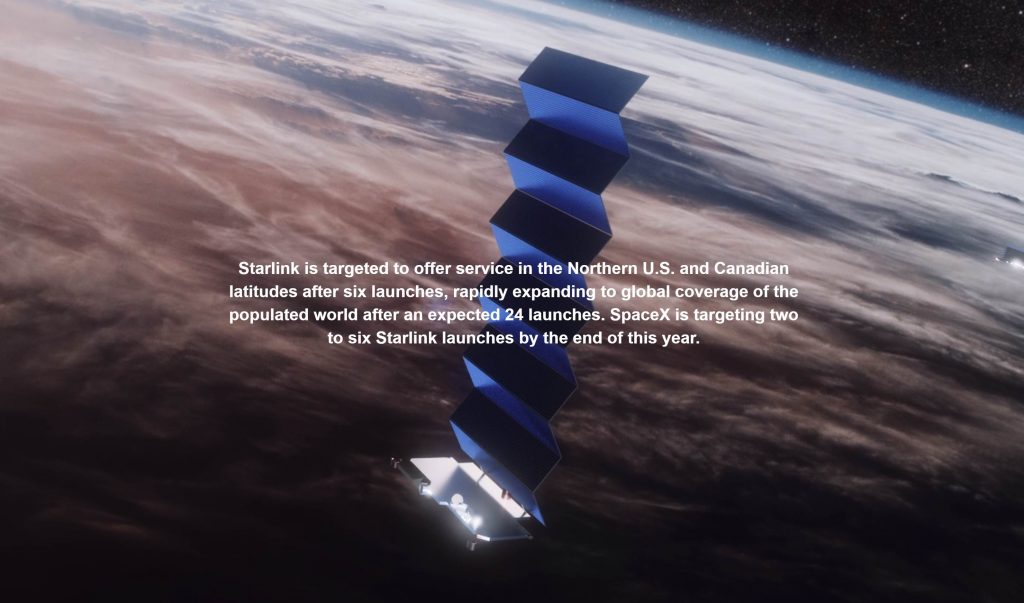
Regardless, for the time being, it appears that odds are good that SpaceX will be able to make good on its promise of launching 2-6 Starlink missions in 2019. According to SpaceX, Starlink can begin offering serious commercial broadband services in regions of the northern US and southern Canada once 360 satellites are safely in orbit.
If SpaceX manages to launch two quasi-operational Starlink missions in the span of a month (Oct-Nov), that initial operations milestone could come just a few months into 2020.
Check out Teslarati’s Marketplace! We offer Tesla accessories, including for the Tesla Cybertruck and Tesla Model 3.
Elon Musk
Why Tesla’s Q3 could be one of its biggest quarters in history
Tesla could stand to benefit from the removal of the $7,500 EV tax credit at the end of Q3.

Tesla has gotten off to a slow start in 2025, as the first half of the year has not been one to remember from a delivery perspective.
However, Q3 could end up being one of the best the company has had in history, with the United States potentially being a major contributor to what might reverse a slow start to the year.
Earlier today, the United States’ House of Representatives officially passed President Trump’s “Big Beautiful Bill,” after it made its way through the Senate earlier this week. The bill will head to President Trump, as he looks to sign it before his July 4 deadline.
The Bill will effectively bring closure to the $7,500 EV tax credit, which will end on September 30, 2025. This means, over the next three months in the United States, those who are looking to buy an EV will have their last chance to take advantage of the credit. EVs will then be, for most people, $7,500 more expensive, in essence.
The tax credit is available to any single filer who makes under $150,000 per year, $225,000 a year to a head of household, and $300,000 to couples filing jointly.
Ending the tax credit was expected with the Trump administration, as his policies have leaned significantly toward reliance on fossil fuels, ending what he calls an “EV mandate.” He has used this phrase several times in disagreements with Tesla CEO Elon Musk.
Nevertheless, those who have been on the fence about buying a Tesla, or any EV, for that matter, will have some decisions to make in the next three months. While all companies will stand to benefit from this time crunch, Tesla could be the true winner because of its sheer volume.
If things are done correctly, meaning if Tesla can also offer incentives like 0% APR, special pricing on leasing or financing, or other advantages (like free Red, White, and Blue for a short period of time in celebration of Independence Day), it could see some real volume in sales this quarter.
You can now buy a Tesla in Red, White, and Blue for free until July 14 https://t.co/iAwhaRFOH0
— TESLARATI (@Teslarati) July 3, 2025
Tesla is just a shade under 721,000 deliveries for the year, so it’s on pace for roughly 1.4 million for 2025. This would be a decrease from the 1.8 million cars it delivered in each of the last two years. Traditionally, the second half of the year has produced Tesla’s strongest quarters. Its top three quarters in terms of deliveries are Q4 2024 with 495,570 vehicles, Q4 2023 with 484,507 vehicles, and Q3 2024 with 462,890 vehicles.
Elon Musk
Tesla Full Self-Driving testing continues European expansion: here’s where
Tesla has launched Full Self-Driving testing in a fifth European country ahead of its launch.

Tesla Full Self-Driving is being tested in several countries across Europe as the company prepares to launch its driver assistance suite on the continent.
The company is still working through the regulatory hurdles with the European Union. They are plentiful and difficult to navigate, but Tesla is still making progress as its testing of FSD continues to expand.
Today, it officially began testing in a new country, as more regions open their doors to Tesla. Many owners and potential customers in Europe are awaiting its launch.
On Thursday, Tesla officially confirmed that Full Self-Driving testing is underway in Spain, as the company shared an extensive video of a trip through the streets of Madrid:
Como pez en el agua …
FSD Supervised testing in Madrid, Spain
Pending regulatory approval pic.twitter.com/txTgoWseuA
— Tesla Europe & Middle East (@teslaeurope) July 3, 2025
The launch of Full Self-Driving testing in Spain marks the fifth country in which Tesla has started assessing the suite’s performance in the European market.
Across the past several months, Tesla has been expanding the scope of countries where Full Self-Driving is being tested. It has already made it to Italy, France, the Netherlands, and Germany previously.
Tesla has already filed applications to have Full Self-Driving (Supervised) launched across the European Union, but CEO Elon Musk has indicated that this particular step has been the delay in the official launch of the suite thus far.
In mid-June, Musk revealed the frustrations Tesla has felt during its efforts to launch its Full Self-Driving (Supervised) suite in Europe, stating that the holdup can be attributed to authorities in various countries, as well as the EU as a whole:
Tesla Full Self-Driving’s European launch frustrations revealed by Elon Musk
“Waiting for Dutch authorities and then the EU to approve. Very frustrating and hurts the safety of people in Europe, as driving with advanced Autopilot on results in four times fewer injuries! Please ask your governing authorities to accelerate making Tesla safer in Europe.”
Waiting for Dutch authorities and then the EU to approve.
Very frustrating and hurts the safety of people in Europe, as driving with advanced Autopilot on results in four times fewer injuries!
Please ask your governing authorities to accelerate making Tesla safer in Europe. https://t.co/QIYCXhhaQp
— Elon Musk (@elonmusk) June 11, 2025
Tesla said last year that it planned to launch Full Self-Driving in Europe in 2025.
Elon Musk
xAI’s Memphis data center receives air permit despite community criticism
xAI welcomed the development in a post on its official xAI Memphis account on X.

Elon Musk’s artificial intelligence startup xAI has secured an air permit from Memphis health officials for its data center project, despite critics’ opposition and pending legal action. The Shelby County Health Department approved the permit this week, allowing xAI to operate 15 mobile gas turbines at its facility.
Air permit granted
The air permit comes after months of protests from Memphis residents and environmental justice advocates, who alleged that xAI violated the Clean Air Act by operating gas turbines without prior approval, as per a report from WIRED.
The Southern Environmental Law Center (SELC) and the NAACP has claimed that xAI installed dozens of gas turbines at its new data campus without acquiring the mandatory Prevention of Significant Deterioration (PSD) permit required for large-scale emission sources.
Local officials previously stated the turbines were considered “temporary” and thus not subject to stricter permitting. xAI applied for an air permit in January 2025, and in June, Memphis Mayor Paul Young acknowledged that the company was operating 21 turbines. SELC, however, has claimed that aerial footage shows the number may be as high as 35.
Critics are not giving up
Civil rights groups have stated that they intend to move forward with legal action. “xAI’s decision to install and operate dozens of polluting gas turbines without any permits or public oversight is a clear violation of the Clean Air Act,” said Patrick Anderson, senior attorney at SELC.
“Over the last year, these turbines have pumped out pollution that threatens the health of Memphis families. This notice paves the way for a lawsuit that can hold xAI accountable for its unlawful refusal to get permits for its gas turbines,” he added.
Sharon Wilson, a certified optical gas imaging thermographer, also described the emissions cloud in Memphis as notable. “I expected to see the typical power plant type of pollution that I see. What I saw was way worse than what I expected,” she said.
-

 Elon Musk3 days ago
Elon Musk3 days agoTesla investors will be shocked by Jim Cramer’s latest assessment
-

 News1 week ago
News1 week agoTesla Robotaxi’s biggest challenge seems to be this one thing
-

 News2 weeks ago
News2 weeks agoTexas lawmakers urge Tesla to delay Austin robotaxi launch to September
-

 Elon Musk2 weeks ago
Elon Musk2 weeks agoFirst Look at Tesla’s Robotaxi App: features, design, and more
-

 Elon Musk2 weeks ago
Elon Musk2 weeks agoxAI’s Grok 3 partners with Oracle Cloud for corporate AI innovation
-

 News2 weeks ago
News2 weeks agoWatch Tesla’s first driverless public Robotaxi rides in Texas
-

 News2 weeks ago
News2 weeks agoSpaceX and Elon Musk share insights on Starship Ship 36’s RUD
-

 News2 weeks ago
News2 weeks agoTesla has started rolling out initial round of Robotaxi invites

















